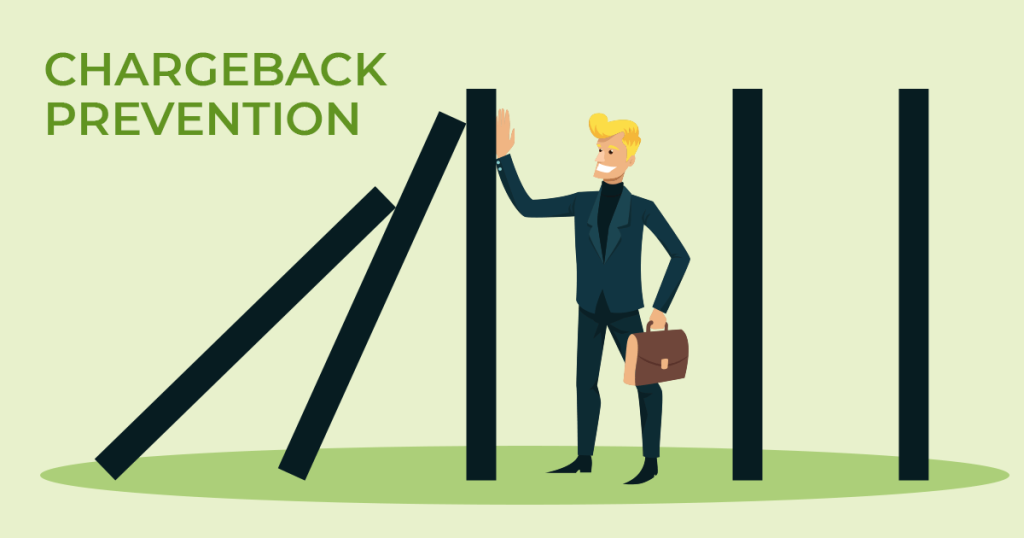Chargebacks are a persistent issue for businesses, leading to revenue loss, additional fees, and operational complications. According to Javelin Strategy, businesses lose around $3.50 for every $1 lost in chargebacks. This includes fees, time spent handling disputes, and potential damage to business reputations. To reduce these risks, businesses must implement multi-pronged strategies for preventing chargebacks.
Chargebacks Overview
Chargebacks generally fall into three main categories:
- True Fraud: Unauthorized transactions using stolen card details. Fraud accounts for 55% of chargebacks.
- Friendly Fraud: Legitimate purchases disputed by customers, often because they don’t recognize the transaction or are dissatisfied with the product. Friendly fraud constitutes 30-40% of chargebacks.
- Merchant Errors: Mistakes like incorrect billing or poor customer service, which make up 10-15% of chargebacks.
Top 10 Chargeback Prevention Strategies
Preventing chargebacks requires a comprehensive approach. Below are 10 key strategies backed by data and industry experience.
1. Use Fraud Detection Tools
Fraud detection systems like Address Verification Service (AVS), Card Verification Value (CVV), and 3D Secure are critical for detecting unauthorized transactions.
- AVS helps match billing addresses with issuer records, preventing 30% of fraudulent transactions.
- CVV checks prevent another 10%.
- 3D Secure reduces eCommerce fraud by up to 40%.
Using these tools together can reduce fraudulent chargebacks by up to 50%.
Table 1: Impact of Fraud Detection Tools on Chargeback Reduction
| Tool | Chargeback Reduction (%) | Fraud Detection Accuracy (%) |
|---|---|---|
| AVS | 30% | 85% |
| CVV Checks | 10% | 90% |
| 3D Secure (MFA) | 50% | 95% |
2. Monitor Transactions Regularly
Monitor transactions for unusual patterns like multiple high-value transactions or orders from high-risk countries. This can prevent 20-25% of chargebacks.
3. Clear Product Descriptions and Return Policies
Unclear product descriptions or complex return policies often lead to disputes. 15% of chargebacks result from customers feeling misled about a product.
To avoid this, ensure that your product pages have:
- High-quality images from multiple angles
- Accurate descriptions of dimensions, features, and materials
- Simple and transparent return policies
Clear return policies can reduce chargebacks by 25%.

4. Multi-Factor Authentication (MFA)
For card-not-present (CNP) transactions, MFA adds an essential layer of protection. 3D Secure 2.0 reduces fraud by 40%, making it a crucial tool for eCommerce merchants.
5. Implement Chargeback Alerts
Using chargeback alerts helps merchants act before disputes escalate. Solutions like those from Merchanto.org notify businesses when a chargeback is imminent, allowing them to resolve issues before a formal dispute is filed.
- Merchanto.org, a partner of VISA and MasterCard, helps prevent 30-40% of chargebacks by providing real-time alerts. Visit Merchanto.org to learn more.
6. Strong Customer Service
90% of customers are willing to resolve an issue directly with the merchant rather than file a chargeback. To reduce chargebacks from service-related issues, ensure strong customer service with multiple contact options, including:
- Live chat
- 24/7 phone lines
- Email and social media support
Effective customer service can prevent 20-30% of chargebacks.
7. Keep Detailed Records
Up to 35% of chargebacks result from clerical errors, such as incorrect billing. Maintaining detailed records of transactions, shipping confirmations, and customer communication logs provides the evidence needed to contest disputes.
8. Simplify Refund and Return Processes
Customers often file chargebacks when the return process is difficult. Studies show that 35-40% of customers resort to chargebacks when they can’t easily return a product.
To prevent this:
- Provide easy-to-use online forms for return requests
- Offer free return shipping
- Include detailed return instructions on product pages

9. Train Employees on Payment Systems
Employee errors in handling transactions can lead to disputes. Train your staff on proper use of magstripe-only and EMV (chip) cards. Following the right procedures prevents costly disputes.
10. Use Chargeback Prevention Services
Many payment processors, like Checkout.com, Stripe.com, and Braintree.com, offer chargeback prevention tools. These services use machine-learning algorithms to detect potential disputes before they occur. Implementing these tools reduces chargebacks by 10-20%.
Table 2: Chargeback Prevention Services and Effectiveness
| Payment Processor | Chargeback Prevention (%) | Key Features |
|---|---|---|
| Stripe.com | 20% | Chargeback protection, fraud detection |
| Checkout.com | 15% | Integrated fraud tools |
| Braintree.com | 18% | Advanced screening, dispute alerts |
Conclusion
By following these 10 strategies, businesses can significantly reduce chargebacks and the operational costs associated with disputes. While chargebacks are costly, fraud detection tools, clear return policies, and proactive measures can reduce disputes by up to 70%.
Businesses should also consider using solutions for advanced chargeback prevention.
Table 3: Chargeback Prevention Methods and Impact
| Prevention Strategy | Chargeback Reduction (%) | Applicable Chargeback Types |
|---|---|---|
| Fraud Detection Tools (AVS, CVV) | 30% | True Fraud |
| Multi-Factor Authentication | 40% | Card-Not-Present Fraud |
| Chargeback Alerts | 30-40% | Friendly Fraud, Merchant Errors |
| Clear Product Descriptions | 25% | Friendly Fraud, Merchant Errors |
| Strong Customer Service | 20-30% | All types |
Adopting these strategies helps businesses protect revenue, improve customer satisfaction, and prevent the long-term impact of chargebacks.



